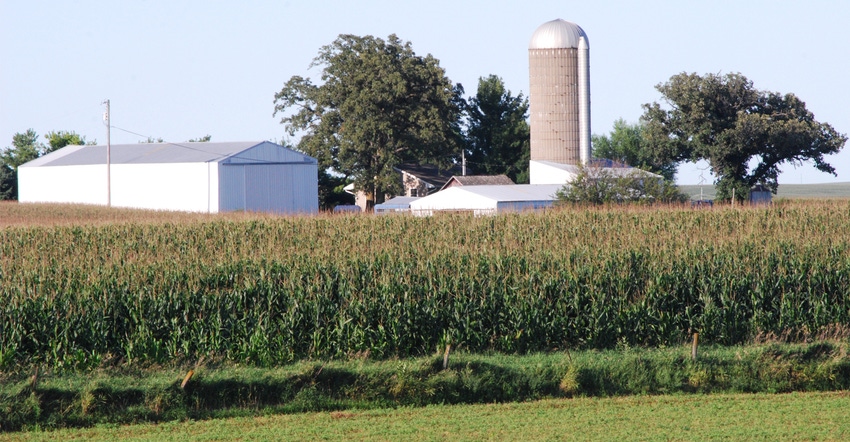November 22, 2017

For third-quarter 2017, farmland values in the Midwest, covered by the Federal Reserve District of Chicago, were down 1% from a year earlier. Moreover, “good” farmland values were little changed for the fourth consecutive quarter.
The Chicago Fed’s quarterly survey covers all of Iowa, the northern half of Illinois and Indiana, all of Michigan, and southern Wisconsin.
The Oct. 1 survey results are based on responses from 201 agricultural bankers. The majority of the respondents expect the district’s land values to be stable during the fourth quarter, but 25% of them expect a decrease in farmland values in the final quarter and only 2% expect an increase.
District ag credit conditions deteriorated in third quarter. Availability of funds for lending by ag banks was down relative to a year ago — the first such occurrence in 11 years. However, for the third quarter, demand for non-real estate loans was up relative to a year ago. The result was a surge in the average loan-to-deposit ratio for the district to 77.4%, its highest level in nine years.
Also, repayment rates for non-real-estate farm loans were lower in the third quarter compared to the same quarter last year, and loan renewals and extensions were higher. Remaining near their historical lows, average interest rates on farm loans moved little during the third quarter.
Farmland values up slightly
The 1% decrease in the district’s farmland values in third-quarter 2017 was about what economists expected. The district did not experience a year-over-year decrease or increase in its ag land values greater than 1% in the past four quarters. Such relative stability in farmland values had not occurred in the district since 1970.
Illinois and Indiana farmland values were down on a year-over-year basis (3% and 4%, respectively), while Iowa and Wisconsin farmland values were both up 2%. The district’s ag land values were unchanged from the second quarter.
Difficult weather conditions during planting, a summer drought in some areas, and heavy rains during harvest in some areas threatened to batter crops this year. In the end, according to USDA estimates, the five district states’ harvest of corn in 2017 is down 7.8% from 2016, whereas soybean production is breaking the record. The new record soybean crop (0.2% above 2016’s level) resulted from harvesting 5.9% more acres. Both district-wide corn and soybean yields were down this year from all-time highs set in 2016.
Credit conditions tightening
Looking at credit conditions, the district seems worse relative to a year ago once again. For the first time since the third quarter of 2006, the availability of funds for lending by ag banks in third-quarter 2017 was lower relative to a year earlier.
The index of funds available showed ag banks in the district had less money for lending than a year ago; 10% of the survey respondents indicated their banks had more funds available to lend during the third quarter than a year earlier and 15% indicated their banks had less.
Source: Federal Reserve Bank of Chicago
You May Also Like




